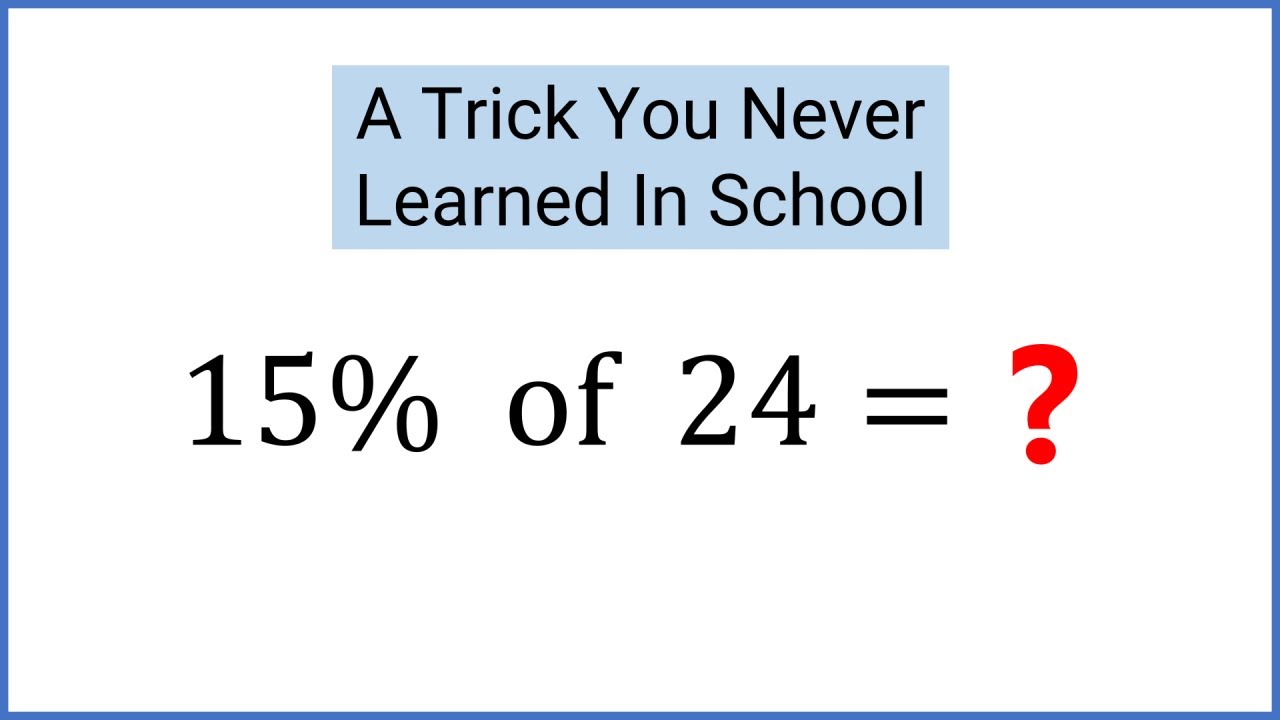
#Quick sheet for figuring percentages plus#
This means that our goods will be sold for the original cost plus 47% of their original cost. Let’s say we want to mark up our items for sale by 47%. Typically, we know how much profit we’d like to make on goods being sold.

What if you know the percentage increase you want, and just need help calculating the result? That’s quite easy too. Therefore, when the formula is copied to the cells below, B3 is changed to B4 for the formula in C4, to B5 for the formula in C5, and so on. Notice that B3 is not entered as a fixed reference. Placing dollar signs before the column name and the row number when referring to cell B1 ensures that when this formula is copied to any other cell, the reference does not shift. If we have several of these values to calculate, we can perform this calculation even easier by placing the denominator in a single cell and referring to it as a fixed value. Then if we change the cell format to Percentage (remember - this multiplies the value by 100), we’ll get 76% displayed in the cell.Īlternatively, we could have formatted the cell as Percentage first, then typed =13/17. So if a student scores 13 out of 17 in a quiz, what percent did they get on their quiz? We can create a simple Excel formula for that.Įxcel formulas start with an equal sign, and we use a forward slash to express fractions.Ī value of 0.76 will be displayed. But whenever the denominator is not a factor of 100, it gets a little trickier to do without a bit of help. Usually, when we want to calculate percentages and the denominator is 10 or 100, that’s fairly simple and is often calculated mentally. If you would like to calculate the percentage of a total, then you just need to do that same thing in Excel. The mathematical formula for percentages is that there is a value being expressed as the fraction of a whole, then multiplied by 100. One thing to note is that there isn’t a function to calculate percentages. Let’s get down to how we actually calculate the percentage of something. They only change the number’s appearance. Here’s a hot tip: This teaches us that number formats don’t change the value of a number. However, if we change cell A3 to General format, the value is displayed as 0.25. So the 25 was typed into cell A3 below, which was previously formatted as Percentage. On the other hand, if you format a cell as Percentage first, then add numeric values, Excel will automatically append the percent sign to the number. But of course, if you had a whole number, then clicking the percent icon will multiply your value by 100 and will probably not be the result you want.įor example, in the image below, the active cell, A1, contains the number 5 and carries a general format.Ĭlicking the percent icon will change the value 5 to 500% because Excel has multiplied the number by 100. This works great if the value you have is a decimal. It does this by multiplying the value by 100 and adding a percent sign. This icon changes number formats to percentages. Students will also determine how much of a percentage a number is to another.You may have seen a percentage icon in the Number command group on the Home tab.
#Quick sheet for figuring percentages how to#
Your students will use these worksheets to learn how to find the specified percentage of a given number. Many stores understand the psychology behind buying and often markup their prices by the same percentage they are giving you off. But you really need to use the skills we cover on these lessons and worksheets to understand if you are getting a deal. When you go to the mall and see that twenty-five percent off sticker, it makes you feel as if you are getting a bargain.

Understanding the percentage of value of a number is very often critical to understanding transitions of all kinds. How?Īll you have to do is covert a percentage into a fraction and multiply the number with it. You can even find the percentage of a number. It can, therefore, be written as both a decimal and a fraction. So, what are the percentages? Even though it is commonly used, not many people know exactly what it is. From corporate companies to schools, and from country governments to special authorities, percentages are used to display statistics.

The application of percentages is not just confined to the subject "math." Its uses spread in daily lives as well.


 0 kommentar(er)
0 kommentar(er)
